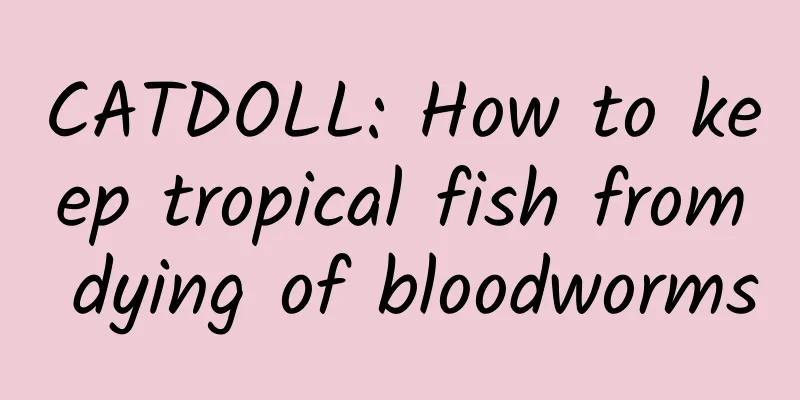CATDOLL : CATDOLL: What should I do if my bullfrog gets sick? What should I pay attention to?

What should I do if my bullfrog is sick? What should I pay attention to?1. Prevention and control methods: (1) Skin rot. This is usually caused by the bullfrogs' long-term consumption of a single bait and lack of vitamins. In severe cases, the bullfrogs' skin will rot and fall off, exposing their muscles and gradually spreading to the whole body. They will refuse to eat and will not like to move. Generally, the skin on the head will rot and turn white, and the joints of the limbs will rot. In severe cases, the webbed bones will be exposed and the limbs will be red and swollen. Prevention and control methods: Soak in 20mg/L potassium permanganate for 30 minutes; spray 0.3mg/L~0.5mg/L chlorine dioxide throughout the pond, and add appropriate amount of vitamin A, vitamin B or cod liver oil to the feed. (2) Red leg disease. It usually occurs in ponds with high density and poor water quality. The skin between the thigh abdomen and forelimbs of the diseased frog becomes red, the hind limbs become weak, and the frog stops eating and moving. It is one of the common diseases in the breeding process. The main symptoms are: redness and swelling of the hind limbs and abdomen, erythema, muscle congestion, and hemorrhagic plaques on the tongue and mouth. Prevention and control methods: Spray 1g/m3 of bleaching powder (28% effective chlorine) or spray 0.3g/m3 of trichloroisocyanuric acid throughout the pond. (3) Gastroenteritis. Gastroenteritis is often caused by indigestion and occurs quickly. It is very harmful. The muscles of young or adult bullfrogs become sore and weak, and they are unable to jump. It can even lead to the death of bullfrogs. Symptoms include: the body color becomes lighter, the body becomes limp and inactive, and the bullfrogs do not eat. Prevention and control methods: Soak the bait table in 2mg/L bleaching powder (28% available chlorine); mix 0.2-0.3g yeast tablets or 0.2g allicin or 0.1g oxytetracycline into the feed per kilogram of frog body weight every day and feed it. 2. Precautions: Management should be strengthened. The pond should be inspected once in the morning, noon and evening every day. The feeding table should be cleaned and the water should be changed frequently to keep the water fresh. The bullfrogs should be graded and raised in a timely manner. The larger individuals should be graded and screened every once in a while, and the bullfrogs of similar sizes should be adjusted to the same pond for breeding. Careful observation should be made. Once the feeding and activity of the bullfrogs are found to be abnormal, appropriate treatment measures should be taken in a timely manner. Sterilize and disinfect quickly, and then give these bullfrogs some medicine to treat diseases. Pay attention to the hygiene of the environment, diet, water, sterilization and disinfection, and pay attention to the weather. It is necessary to distinguish what disease you have, analyze the cause, take timely intervention measures, and take medicine to treat the disease. Inspections should be carried out every morning, noon and evening, and the food tables should be cleaned and the water changed frequently. Give bullfrogs medicine to treat diseases. Pay attention to the surrounding environment, sterilize and disinfect, pay attention to food, water, and weather. Is this a frog or a toad? What is its scientific name?It's a frog In our dialect, it is called Tianji. It is a kind of frog. Toad has bumps on its skin, and its scientific name is Bufo bufo. It's not a frog or a toad, it's a tree frog. But let's not worry about the frog for now, it's time to clean the toilet. There are in the countryside. If you translate it into Mandarin, it seems to be "Shangshuguai" (read it in the local dialect). This can help you jump high. Some are poisonous. It appears in summer. This one is called Frog |
<<: CATDOLL: How to transport turbot over long distances
>>: CATDOLL: Where do clams usually live?
Recommend
CATDOLL: How much water and fish feed do you need to keep red worms alive? (How much water and fish feed do you need to keep red worms alive?)
1. How to breed red worms? When breeding red worm...
CATDOLL: Which marine fish are suitable for breeding in the north?
Which marine fish are suitable for breeding in th...
CATDOLL: What are the tips for raising silkworms? (What are the tips for raising silkworms?)
1. What are the correct methods and techniques fo...
CATDOLL: Pufferfish is highly poisonous, so why do so many people still want to try it?
There is a saying: "Eat puffer fish at the r...
CATDOLL: Grasshoppers and crickets seem the same, how do you tell them apart?
1. Grasshoppers and crickets seem to be the same,...
Marketing strategies for rural pig farming
Choose the right sales channel Although there is ...
CATDOLL: Methods and precautions for circovirus vaccination of pigs
What is circo vaccine for pigs? The porcine circo...
CATDOLL: How to prepare soil for earthworm breeding? What should be prepared? What kind of soil is good?
How to prepare soil for earthworm breeding? What ...
CATDOLL: What book should I buy for the breeding techniques of grass carp, silver carp, crucian carp and bighead carp?
1. What book should I buy for the breeding techni...
CATDOLL: What are the correct ways to raise silkworms?
1. How to raise silkworms? Step/Method 1 Prepare ...
CATDOLL: What qualities does the Golden Cicada have?
1. What qualities does the Golden Cicada have? Go...
CATDOLL: What is the best way to feed red worms? (What is the best way to feed red worms?)
1. How to breed red worms? Step/Method 1 When bre...
CATDOLL: What tree is best for breeding golden cicadas? (What tree is best for breeding golden cicadas?)
1. What trees are used for breeding cicada monkey...
CATDOLL: Where can I learn the techniques of raising scorpions?
1. Where can I learn the techniques of raising sc...
CATDOLL: Fishing tips with mealworms How to fish with mealworms
1. Fishing techniques with mealworms How to fish ...









